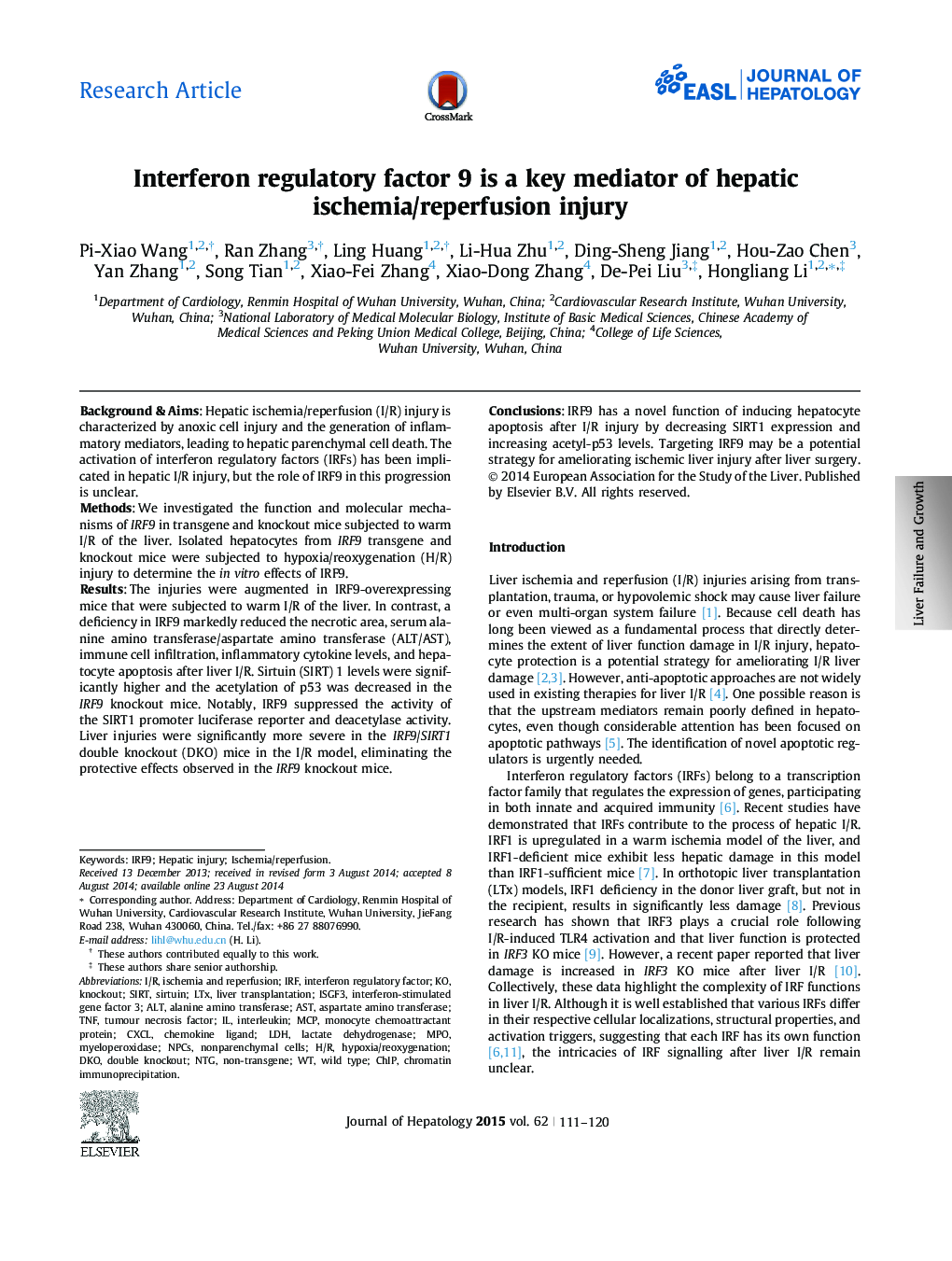| Article ID | Journal | Published Year | Pages | File Type |
|---|---|---|---|---|
| 6102936 | Journal of Hepatology | 2015 | 10 Pages |
Background & AimsHepatic ischemia/reperfusion (I/R) injury is characterized by anoxic cell injury and the generation of inflammatory mediators, leading to hepatic parenchymal cell death. The activation of interferon regulatory factors (IRFs) has been implicated in hepatic I/R injury, but the role of IRF9 in this progression is unclear.MethodsWe investigated the function and molecular mechanisms of IRF9 in transgene and knockout mice subjected to warm I/R of the liver. Isolated hepatocytes from IRF9 transgene and knockout mice were subjected to hypoxia/reoxygenation (H/R) injury to determine the in vitro effects of IRF9.ResultsThe injuries were augmented in IRF9-overexpressing mice that were subjected to warm I/R of the liver. In contrast, a deficiency in IRF9 markedly reduced the necrotic area, serum alanine amino transferase/aspartate amino transferase (ALT/AST), immune cell infiltration, inflammatory cytokine levels, and hepatocyte apoptosis after liver I/R. Sirtuin (SIRT) 1 levels were significantly higher and the acetylation of p53 was decreased in the IRF9 knockout mice. Notably, IRF9 suppressed the activity of the SIRT1 promoter luciferase reporter and deacetylase activity. Liver injuries were significantly more severe in the IRF9/SIRT1 double knockout (DKO) mice in the I/R model, eliminating the protective effects observed in the IRF9 knockout mice.ConclusionsIRF9 has a novel function of inducing hepatocyte apoptosis after I/R injury by decreasing SIRT1 expression and increasing acetyl-p53 levels. Targeting IRF9 may be a potential strategy for ameliorating ischemic liver injury after liver surgery.
Graphical abstractDownload high-res image (137KB)Download full-size image
